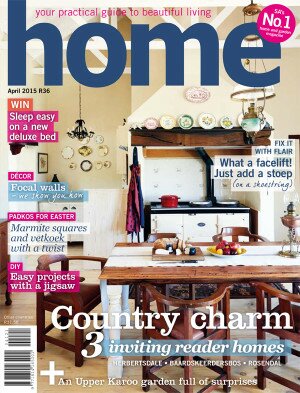-
Step by Step: String Art
String art was a popular craft in the '60s and '70s, and now, it has a new lease of life
9 October 2014
You will need
- bicycle template
- thick-nibbed marking pen
- wooden board (plywood or pine)
- repositionable spray glue
- small panel pins
- hammer
- pliers
- embroidery thread or crochet yarn, or thin string
- scissors
- pencil
TIP Use the same technique to make numbers, letters or even a name on a larger scale and in different colours.
Download the Template here
1 Enlarge the template or use a design of your choice. We chose a bicycle, inspired by a photo. Enlarge the template so you will have enough space between the panel pins and so the design fits on your wooden board.
2 Paint your wooden board first, if you prefer. We painted ours white. While you wait for the paint to dry you can plan where you are going to hammer the panel pins into the picture – we marked the dots with a thick-nibbed marking pen. Remember to leave enough space between the panel pins.
TIP There are no rules as to how many dots you should make and how far apart to make them, but remember that, for instance, you need more pins around the curves. It’s also not necessary for them to be perfectly parallel; just make sure that you have enough pins for variation in the lines that your string is going to form.
3 Spray glue onto the back of the template and stick it in position on your wooden board.
4 Use a hammer to insert a panel pin at each marked dot. You can grip the pins with pliers if you struggle to hold them in your fingers.
TIP Hammer in the pins to more or less the same depth. You can use a small piece of wood or board as a guide.
5 When the design is complete, straighten the pins with the pliers or tap them with the hammer to straighten them if they are a little skew. Pull off the paper, starting from one corner.
6 Choose a starting point and make a secure double knot around the first pin. Turn the string around the head of the next pin and continue in this way. Although traditional string art is done strictly according to the design, our method is not nearly so specific – you can construct your picture as you wish. Try, however, not to turn the string more than twice or three times around the same panel pin and fill in the gaps as you go.
Text and images: Ideas magazine













